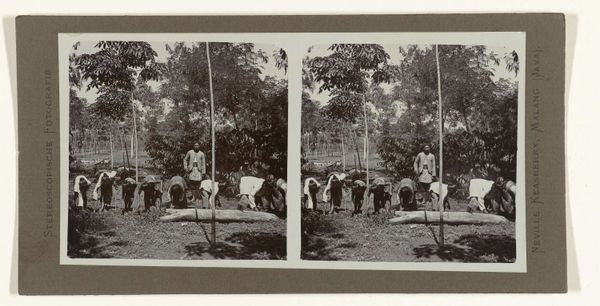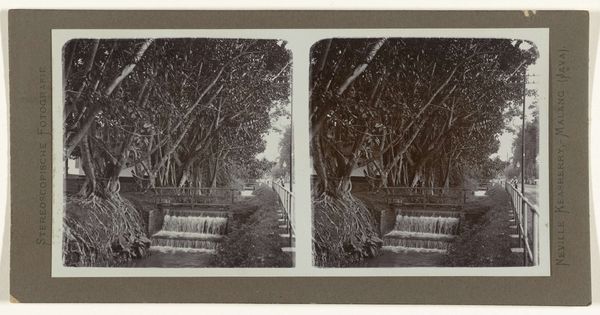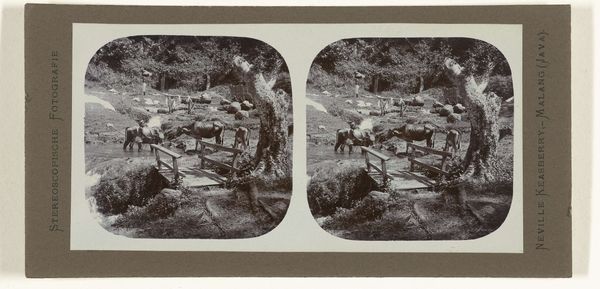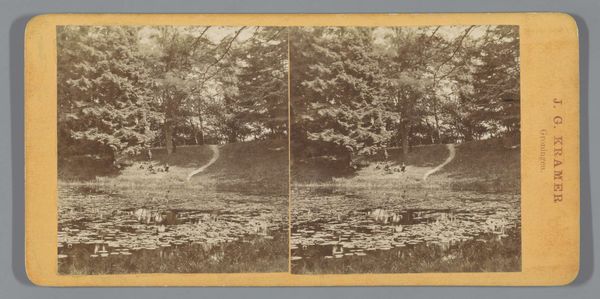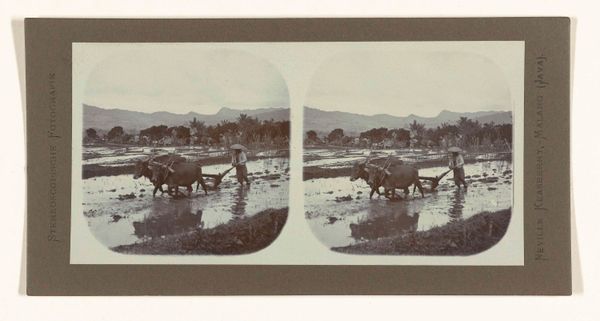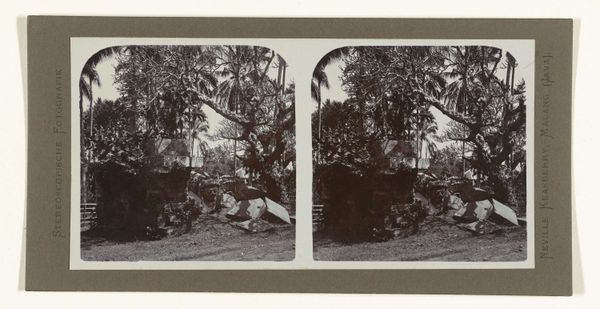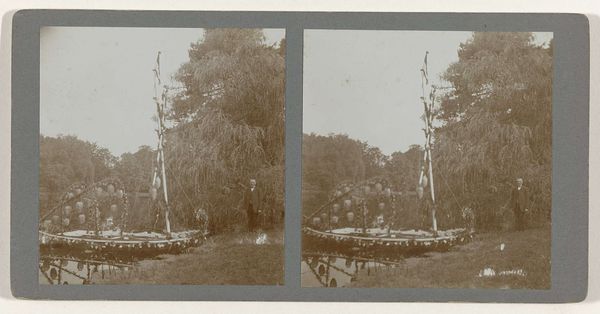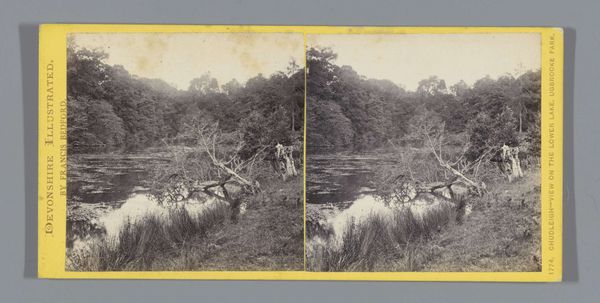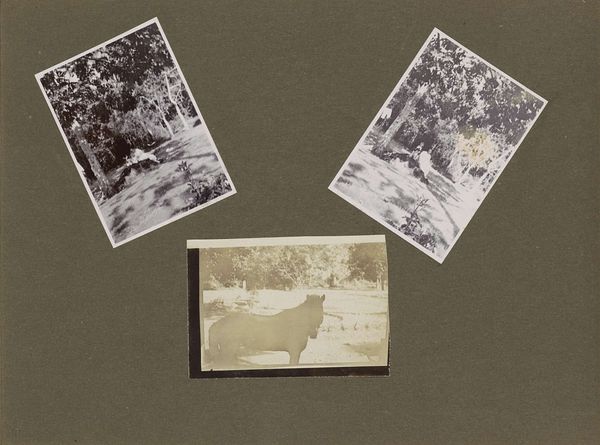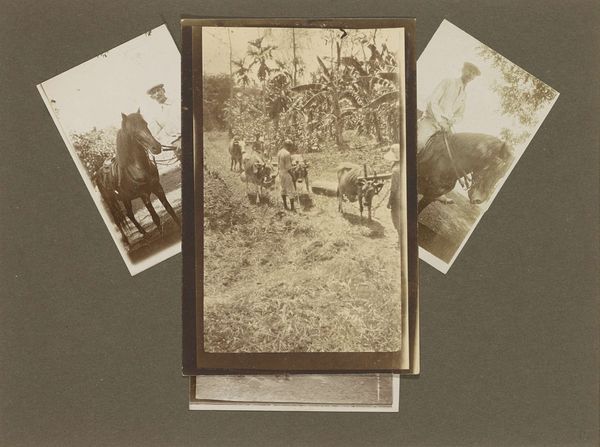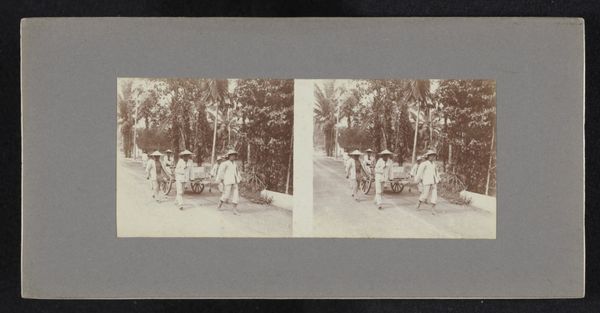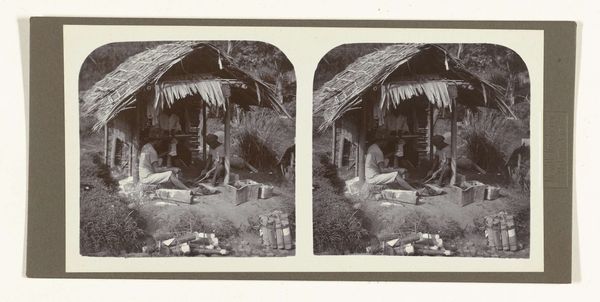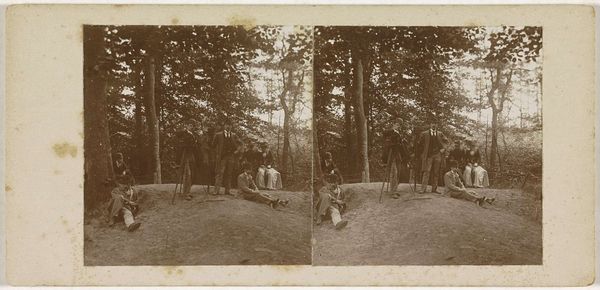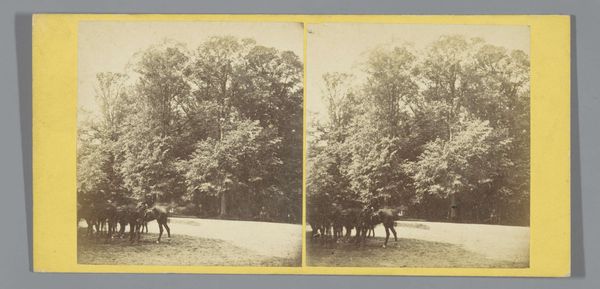
photography, albumen-print
#
pictorialism
#
landscape
#
photography
#
albumen-print
Dimensions: height 76 mm, width 152 mm
Copyright: Rijks Museum: Open Domain
Editor: So, this albumen print photograph from somewhere between 1900 and 1935, titled "Man met paard voor de waterval Coban rondo vanaf de Gunung Kawi" by Neville Keasberry, has a really tranquil feeling to it, despite being in black and white. The horse and figure seem dwarfed by the scale of the waterfall and the lush surroundings. What strikes you about it? Curator: The serene mood you’re picking up on speaks volumes. But beyond aesthetics, consider the historical context: This image, captured in Java, isn’t just a landscape; it's a document reflecting colonial-era perceptions of nature and labour. Who exactly is this man, and what is his relationship to both the horse and the land itself? What power structures are subtly embedded in this seemingly picturesque scene? Editor: That's interesting. I hadn't really considered the colonial implications. The man almost seems posed, as if he is an element of the exotic scenery, almost like a prop. Curator: Precisely. Photography of this era often romanticized colonized landscapes while simultaneously erasing the agency and individuality of its inhabitants. Think about how the very act of photographing, of framing this scene, reinforces a Western gaze, a claim of ownership over the visual narrative. How does understanding that impact your initial tranquil reading? Editor: It definitely complicates it. It feels less innocent now, and more like a constructed reality, like a stage for a particular kind of performance. I guess it speaks to the complex relationship between the colonizer and the colonized, the spectacle and the spectator. Curator: Indeed. And by grappling with these uncomfortable truths, we can challenge the power dynamics embedded within these images, inviting a more nuanced understanding of their historical and cultural impact. It's about uncovering the stories silenced within the frame. Editor: This has really shifted my perspective. I appreciate you sharing the importance of thinking about photography in the context of the political history, because there’s so much more at stake than aesthetic judgements.
Comments
No comments
Be the first to comment and join the conversation on the ultimate creative platform.
